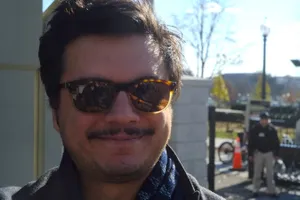Conversations Across Collections: Considering Art and Activism with Juan Sánchez
/https://tf-cmsv2-smithsonianmag-media.s3.amazonaws.com/blogging/featured/sancjuan_box0003_folder010_010-detail.jpg)
Welcome to Conversations Across Collections, a collaborative series between the Archives of American Art and the Crystal Bridges Museum of American Art, where we highlight archival documents and works of art from our collections that tell the story of American art. Read more on artists and activism in Xuxa Rodriguez’s essay, “Conversations Across Collections: Artists and Antiracist Activism,” on the Crystal Bridges blog.
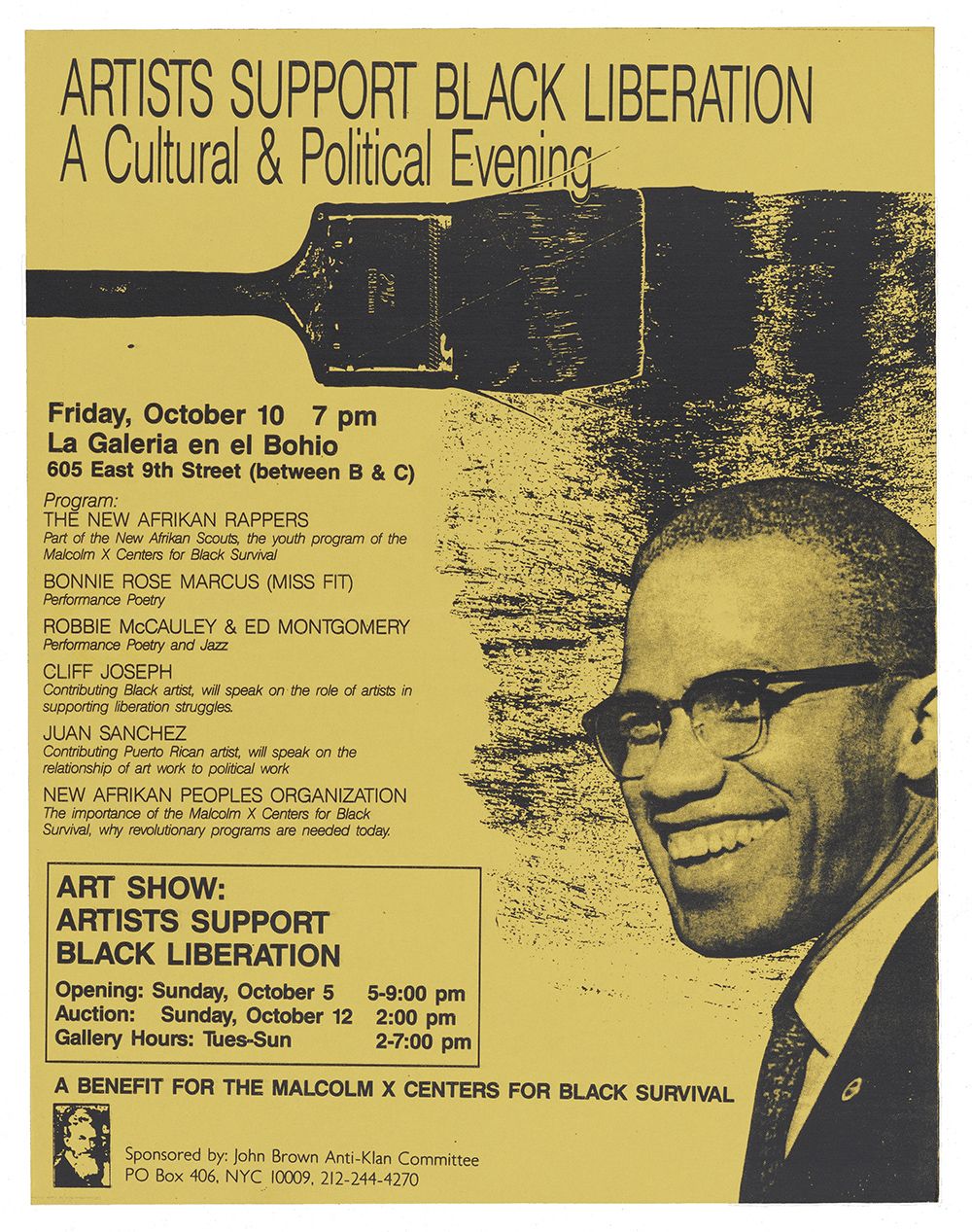
The Juan Sánchez papers at the Archives of American Art give the impression that, for this artist, little space exists between the pursuit of an artistic career and the pursuit of social justice. Though notably pronounced, Sánchez’s career is not alone in this association of course, as made clear by the robust lists of peers from Alice Neel to Jean-Michel Basquiat and scores of others populating the checklists associated with exhibitions like Artists Support Black Liberation, which my colleague Xuxa Rodriguez examines in detail in her companion essay, Conversations Across Collections: Artists and Antiracist Activism.
Broken Rifles: A Benefit Exhibition (for the War Resisters League), Areyto for Life: Hispanic AIDS Forum’s Second Annual Benefit Gala, and ¿Whose Wars? Vietnam and Central America, to note a handful. Another, Image Wars: An Exhibition of Oppositional Art, was organized by the Artists Call Against U.S. Intervention for Central America campaign in which writer and curator Lucy Lippard played a central role. Her expansive papers, a frequently cited resource in the Archives, contain further associated print material as well as audio recordings, firsthand documents of conversations among the campaign’s active members. (As made clear in his papers and oral history, Sánchez considers Lippard a field-shaping political organizer and artistic interlocutor, a consideration in which he is far from alone.) Writing on the heels of 2020, momentous year in American and global history that it was, these titles—the questions they provoke and the issues they bring to mind—feel acutely relevant all over again. In the current moment, artists are being inundated with invitations to the twenty-first century versions of programs like these. As each invitation is considered, artists must ask themselves a number of questions: What makes art political? Can I afford to donate artworks to social justice awareness and fundraising events? What characterizes social justice and what does my practice have to do with it? What issues am I invested in personally? How does my art serve to demonstrate solidarity? Is art a tool or a distraction?
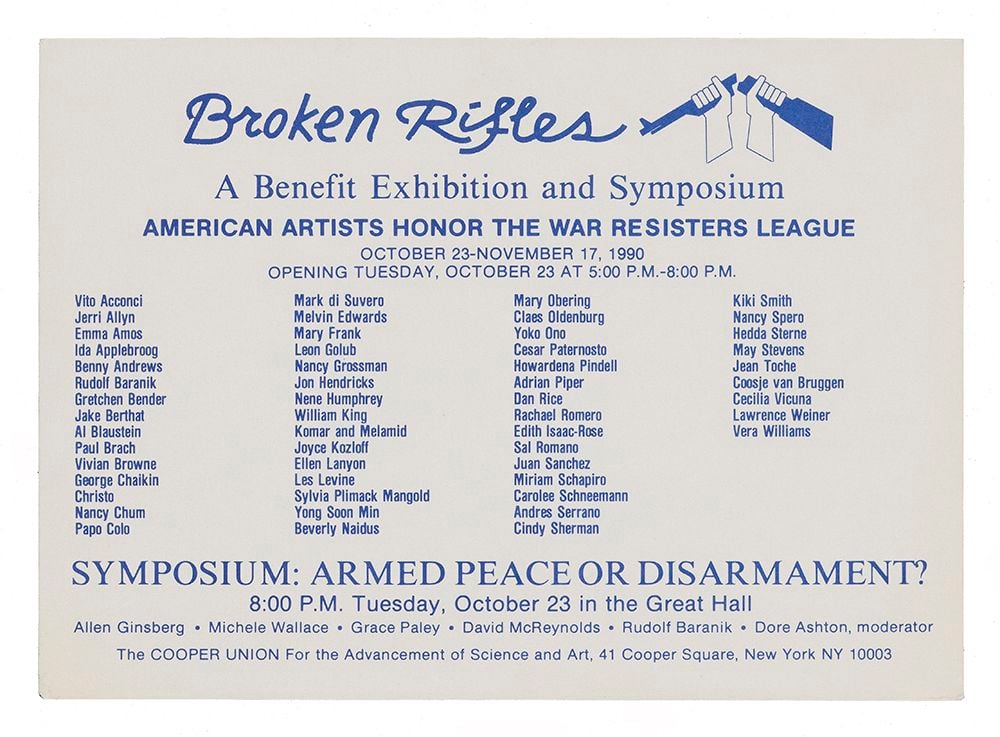
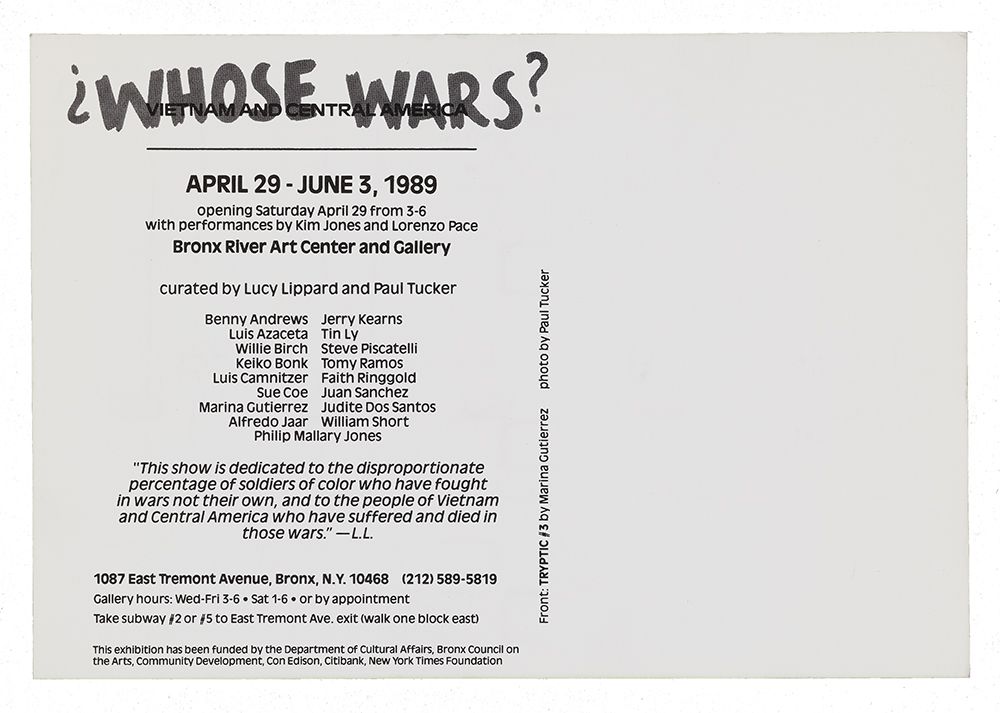
Fortunately, the Archives also holds an oral history interview conducted with Sánchez in 2018, in which the artist addresses these very questions. One particularly relevant passage is reproduced below uninterrupted by further comment but interwoven with relevant documents from Sánchez’s papers. Together, these provide a glimpse into this artist’s own efforts to understand the relationship between his art and activism early in his ongoing career. Hopefully, they also suggest language and provide historical perspective for artists and arts workers consumed by the same questions today. Besides Lippard, Sánchez notes other companions and peers in the exploration of these topics, such as Leon Golub, Nancy Spero, and the collective Group Material.
As a member of the curatorial team at the Archives, I initiated and oversaw the acquisition of Sánchez’s papers myself. The collection as a whole goes far beyond the handful of documents here, and I encourage researchers to further explore the extensive materials that, besides documenting Sánchez’s career, provide unique histories of New York City from the 1970s to today, illuminate the dynamics of artistic exchange between Nuyorican creatives and Puerto Rico, document twentieth century printmaking networks and practices, and offer glimpses into the lives of other storied figures and institutions in American art such as Ana Mendieta, Cooper Union, and Loisaida, Inc.
It was also my honor to conduct Sánchez’s oral history. While the brief passage below is itself full of history, provocations, and insights, I encourage readers to explore the full document, a transcript of two unforgettable days spent with the artist at his studio in Brooklyn, surrounded by paintings in progress. Readers should keep in mind that this is a transcript of spoken words, and not a written document.

Excerpt, Oral History Interview with Juan Sánchez, 2018 October 1–2
JUAN SÁNCHEZ: There’s been a few shows where—because curators then, all of a sudden, they’re putting together political art exhibitions, many for good reason and good cause, but others just to create a sensation or whatever. So they would invite me and Leon Golub, a bunch of other artists who are kind of like left-wing, and then they would bring some other artists that are—you know, their work is political but extremely reactionary—into the fold, and have that kind of thing, and I’m saying, “I don’t want to be involved with that. Why should I put myself in that situation?”
JOSH T. FRANCO: But this is what motivated you to curate yourself?
JS: Well, the fact that there were, at a certain point, too many shows happening, and Puerto Rico is never in the conversation, but Central America, South Africa, whatever—and for the most part it’s just white artists—my motivation was to—you know, if you’re going to cry crocodile tears over how the Black man is treated here, I’m going to bring some Black artists who fucking talk about it. Let it come from the horse’s mouth, you know? Let me have Native Americans. I had people like Jimmie Durham participate in those shows. I had Puerto Ricans, Mexican Americans. I had quite a group of artists, male and female, that—you know, this is the issue that you’re addressing, it’s from your own experience. And then I scattered a few others, but with someone like a Leon Golub—Leon Golub was a great artist but he was also an activist, and he engaged, and he was part of various movements, and so on and so forth. So he’s always been a real deal for me. Nancy Spero. You know, there’s a bunch of others that, you know—but then you have these others that, all of a sudden, it’s like that’s Baskin-Robbins flavor. It’s like, “Oh, it’s political art.” So everybody’s doing political art, everybody’s doing—you know. And even to this day, which is something that I tell my students, it’s like, Okay, why are you concerned about this? Okay, wonderful. Do you know these people? Are any of them your friends? Or it’s just this anti-Arab, anti-this, you know? Yeah, but do you know any of them? I mean, have you sat down with them? I don’t know, are they part of your inner life force? That’s just something from a distance and, you know, it looks good, it looks interesting, but do you know any of these people? I mean, there was a time when straight out of graduate school, being involved with these shows and these groups, all of a sudden I’m—you know? Unfortunately, they’re all gone, but all of sudden Palestinian artists were getting in touch with me. You know, people who went to graduate school in the United States or whatever. They’re going back home because they want to start a school or whatever, and I was engaged with them and it’s just wonderful. My point is that there was quite a bit of opportunism, like any other art movement, where all of a sudden it’s like, “Well, I’m doing this but, you know, this will probably get me more exposure.” It’s just opportunism. You know?
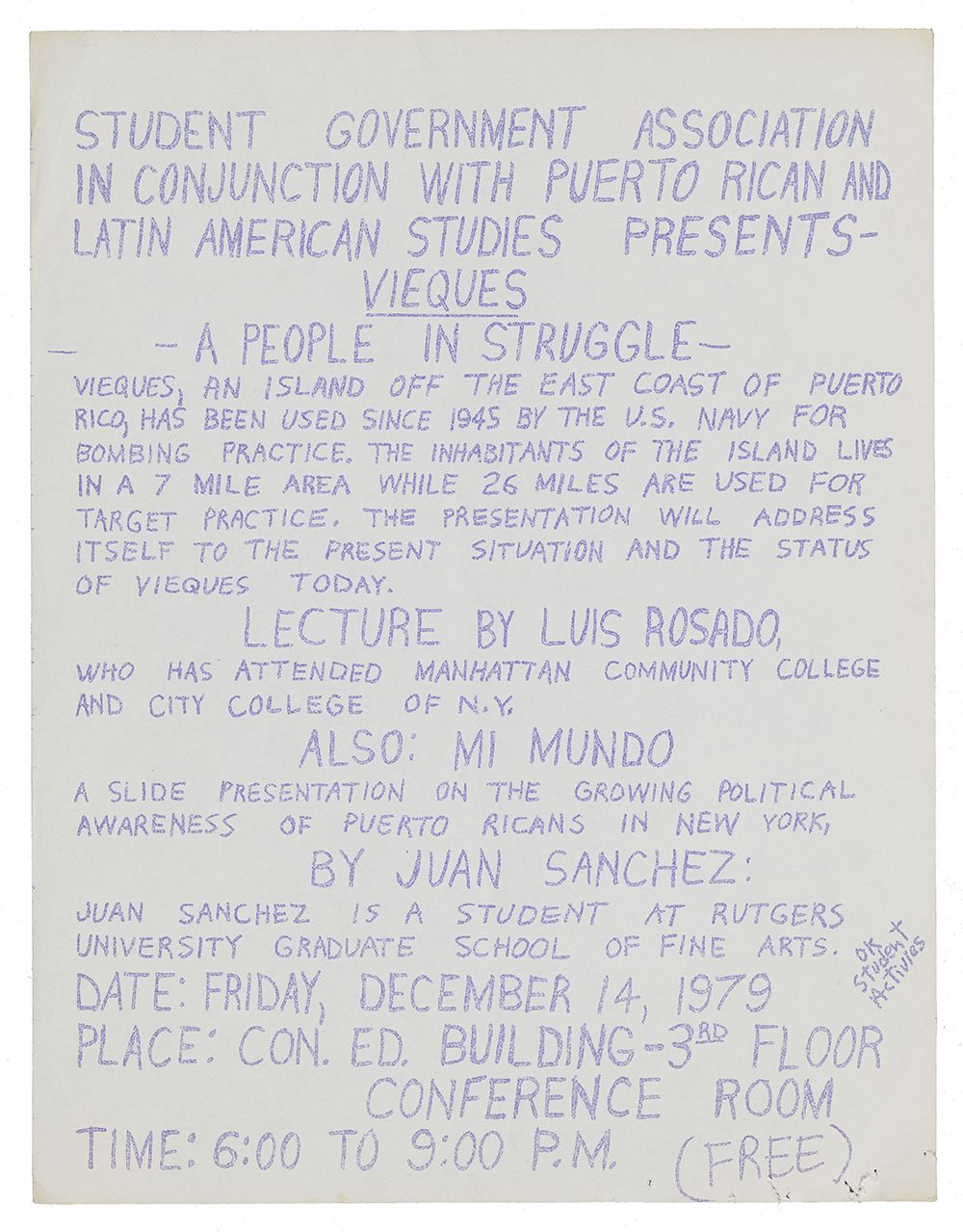
. . . I’m not taking away that there’s quite a number of people who are sincere and all of that, but it just got so out of hand. And, you know, why am I not invited to these shows? It’s like, whatever, you know. And then I would look at the whole scheme of things and it’s like, everything is addressed but Puerto Rico is like nothing. So at that time, with the exception of what Taller Boricua were doing or whatever, I was the only artist that was even addressing that. I was the only artist that even addressed the fact that we have political prisoners. You know, not only Puerto Ricans but African Americans, and so on and so forth. And as much as I look at the spread, you know, they dealt with a lot of interesting and significant issues, living among artists of color, but that was the one thing that sometimes—and I don’t know why, because in the ’70s and the ’60s, there was such a strong campaign for people who have been incarcerated because of their political activity, like the Angela Davises and so on and so forth.
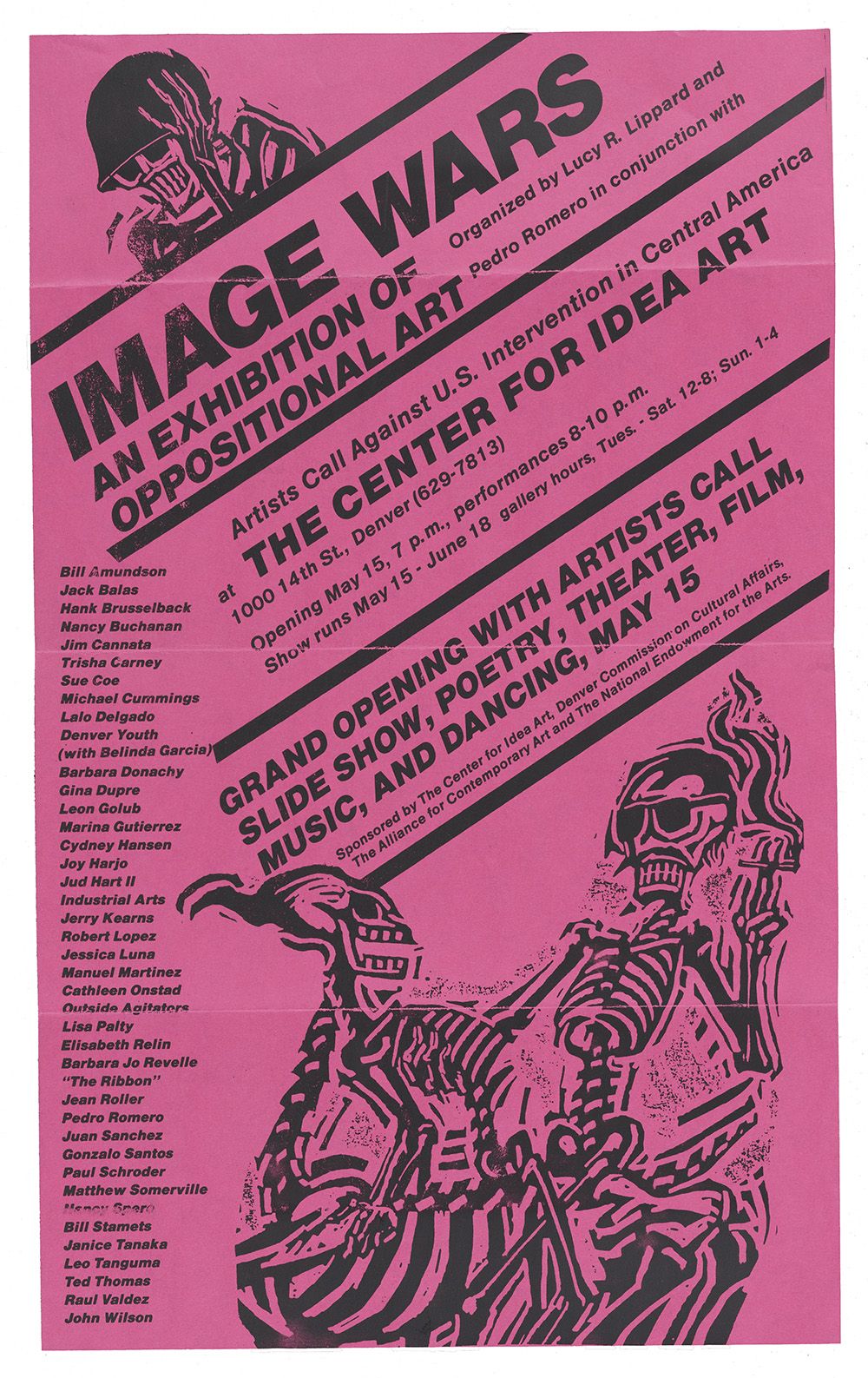
. . . But then, they reached a point where you talk about the broad thing and, okay, police brutality and all that, very critical, but then at the same time, that other layer where there’s a number of advocates that have been arrested and convicted and framed, who are rotting in jail, and there’s no real campaign to demand the release of these people. And so I got very caught up with the Puerto Rican political situation. At that time, it wasn’t even political prisoners. At that time, there were prisoners of war, because a number of them were allegedly involved in armed underground movements, like the FALN [Fuerzas Armadas Liberación Nacional] and the Macheteros and so on and so forth. But, you know, there was a movement within the independence movement to address that issue, and I was the only artist, at least here in the States, that was addressing that. So I fell even more to the extreme left. You know? I was doing these paintings about that and I would—in every catalog that you have, I dedicate—you know? I mean, I was dead on in that campaign, because my feeling was that whatever the outcome—let’s suppose Puerto Rico do become the 51st state, or just maintain their so-called free associated state status. The priority is that whatever it is, there has to be, within the negotiation, the release of these people. And so far, they’ve all been released, but I also heard about two women that are now in jail. So it’s an ongoing thing and during that time, you know, the ’80s, working with Group Material and being in a bunch of other group shows, the FBI tapped our phone. The FBI was following me, my brothers, my mother. I mean, there was all of these things happening. So it was, like, this period where it’s not just me working on a subject matter. It’s me being directly involved with it, working with committees and political organizations on all of these issues, and experiencing persecution.
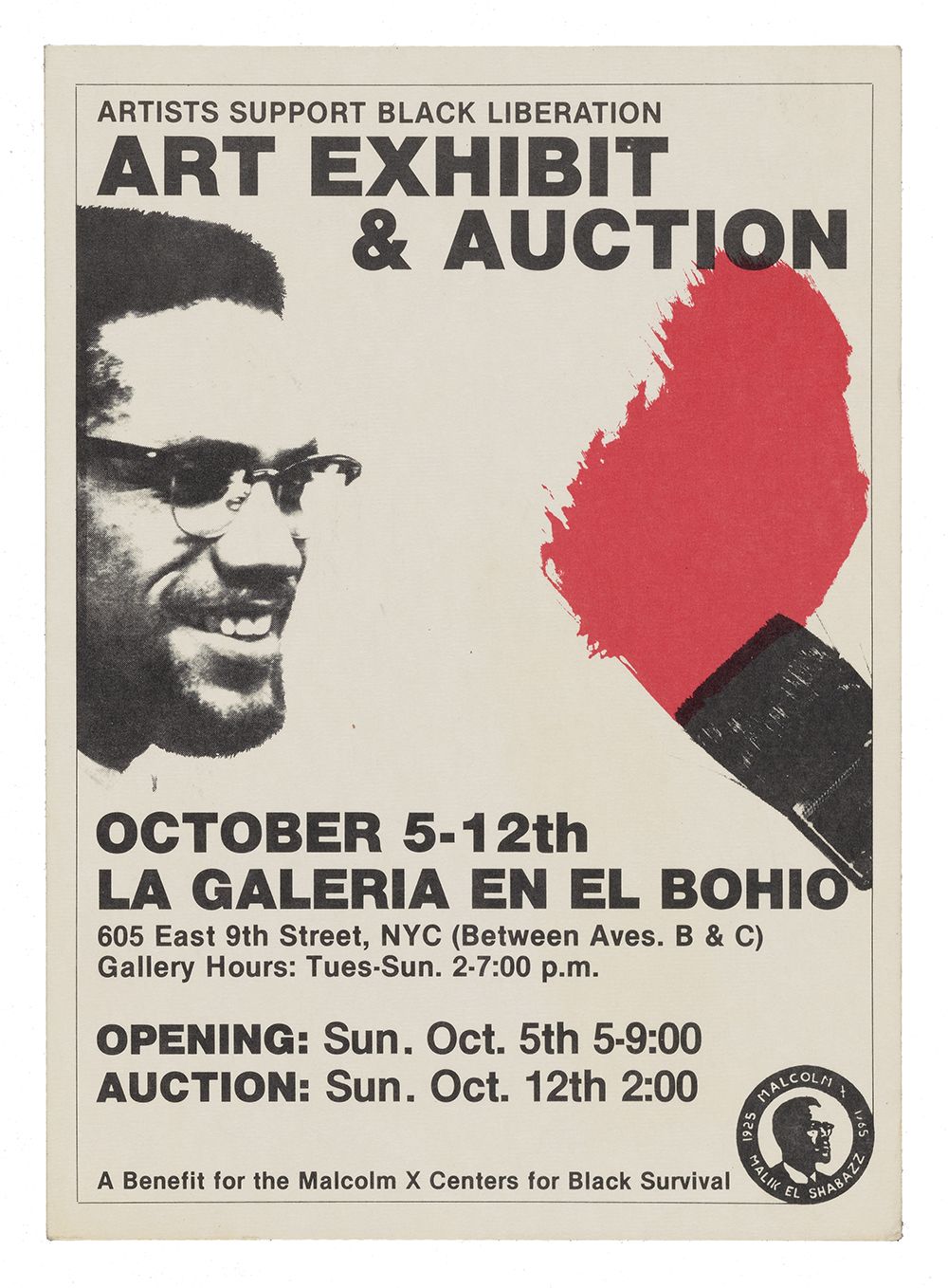
JTF: Were you working with Lucy Lippard’s efforts?
JS: Well, I collaborated with a number of her efforts and I also submitted artwork and things like that for the PAD/D [Political Art Documentation/Distribution] publication. My engagement with Lucy—you know, Lucy was also an incredible person. She brought me in quite a number of shows that she curated, and has also written reviews where my work has been mentioned and so on and so forth, and of course she included me in a couple of her books. So she’s been a very strong supporter. And of course, she was involved with Artists Call and Art Against Apartheid, among other things, and I was there with her. Yeah, I think that’s about it. She was always in the field and she understood very clearly, in terms of where I was coming from. And you know, she’s given money, she’s put her name in petition and things like that, in relation to political prisoners and things like that. That’s another one that I felt was very genuine, you know? And she understood my argument and she understood my complaints, and she always found ways to bring many different artists into her shows and discourse.
Explore More:
- Conversations Across Collections: Artists and Antiracist Activism by Xuxa Rodriguez on the Crystal Bridges blog
- The Juan Sánchez papers at the Archives of American Art
- Oral history interview with Juan Sánchez, 2018 October 1-2
- Oral history interview with Juan Sánchez, 2020 July 30 for the Archives’ Pandemic Oral History Project
- Special issue of the Archives of American Art Journal on Latino art (Fall 2018, vol. 52, no. 2) featuring art by Juan Sánchez on the cover
- Past entries in the Conversations Across Collections series


